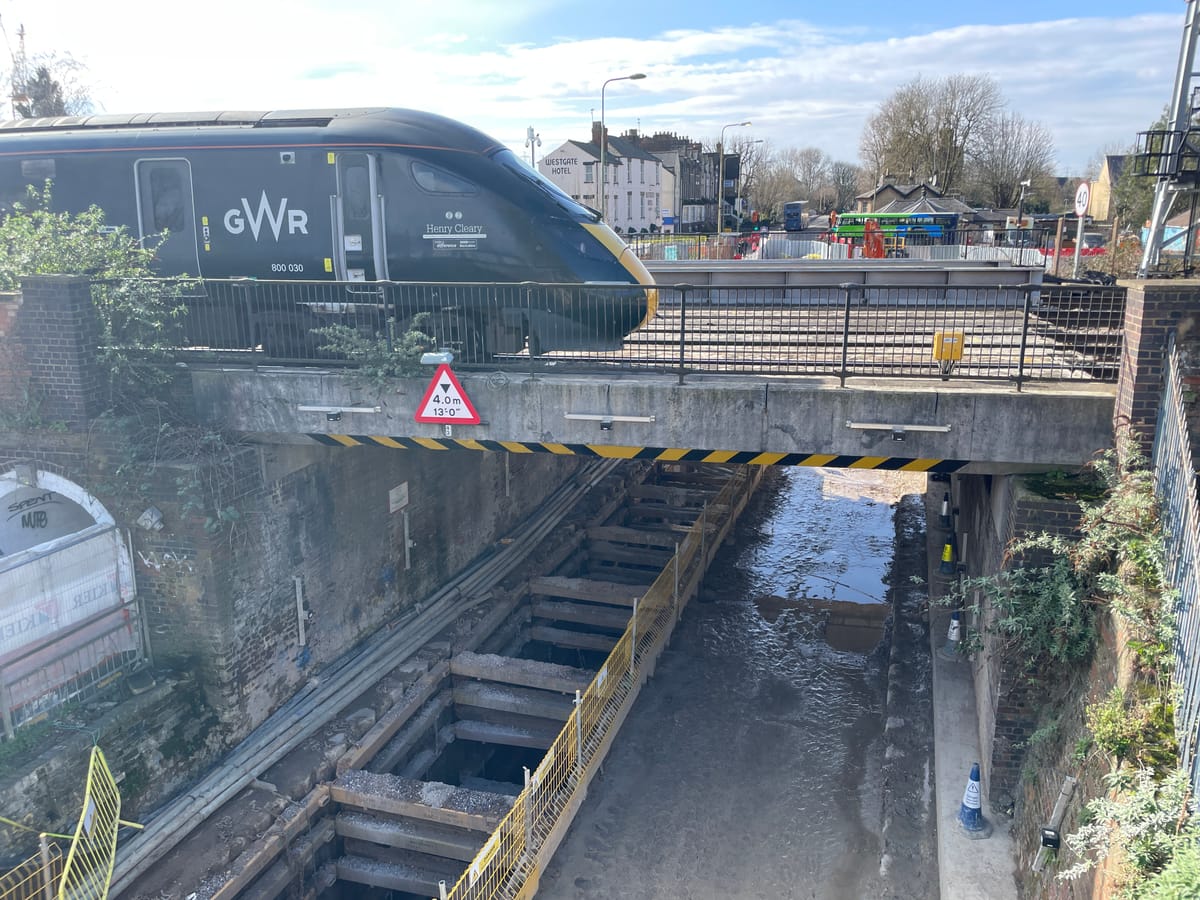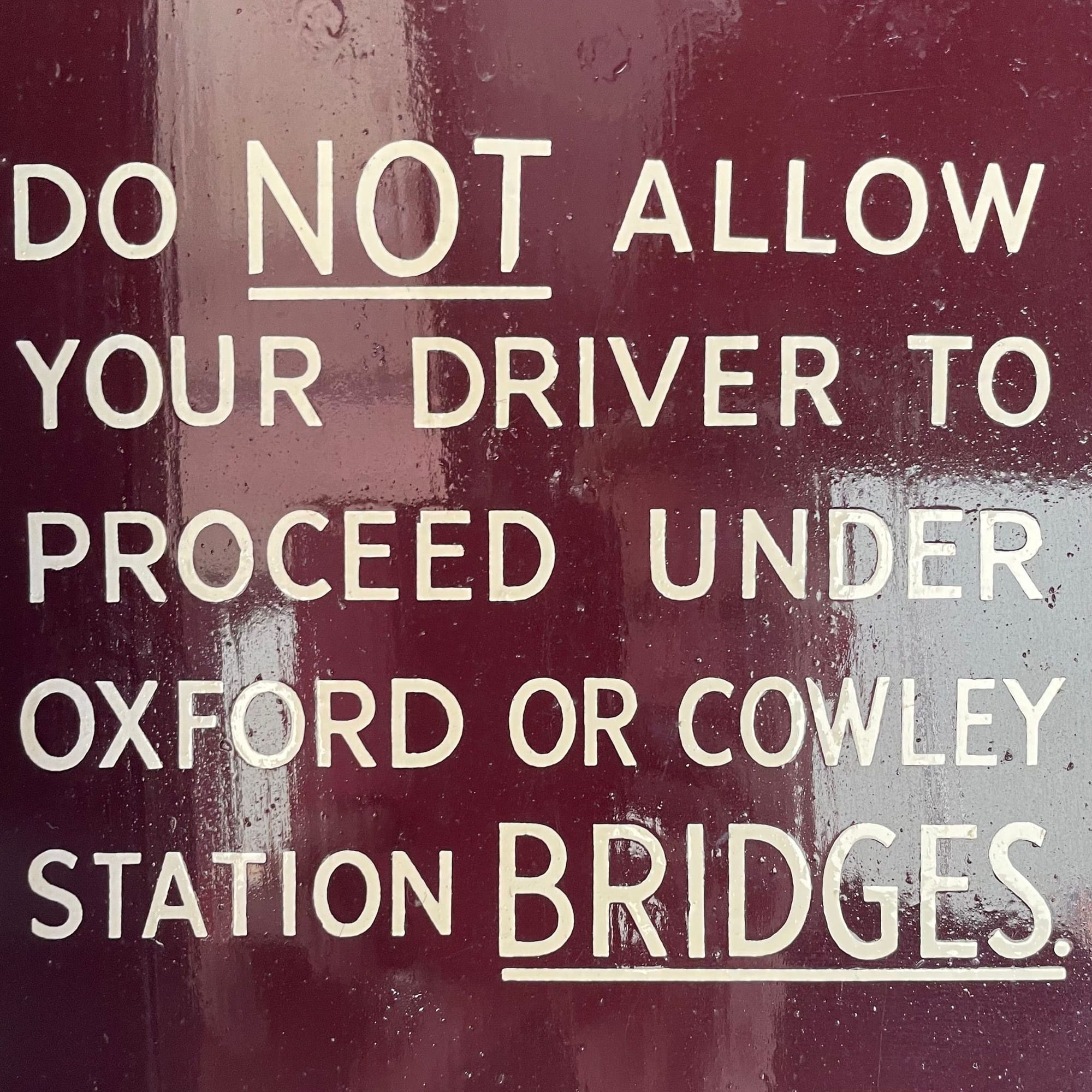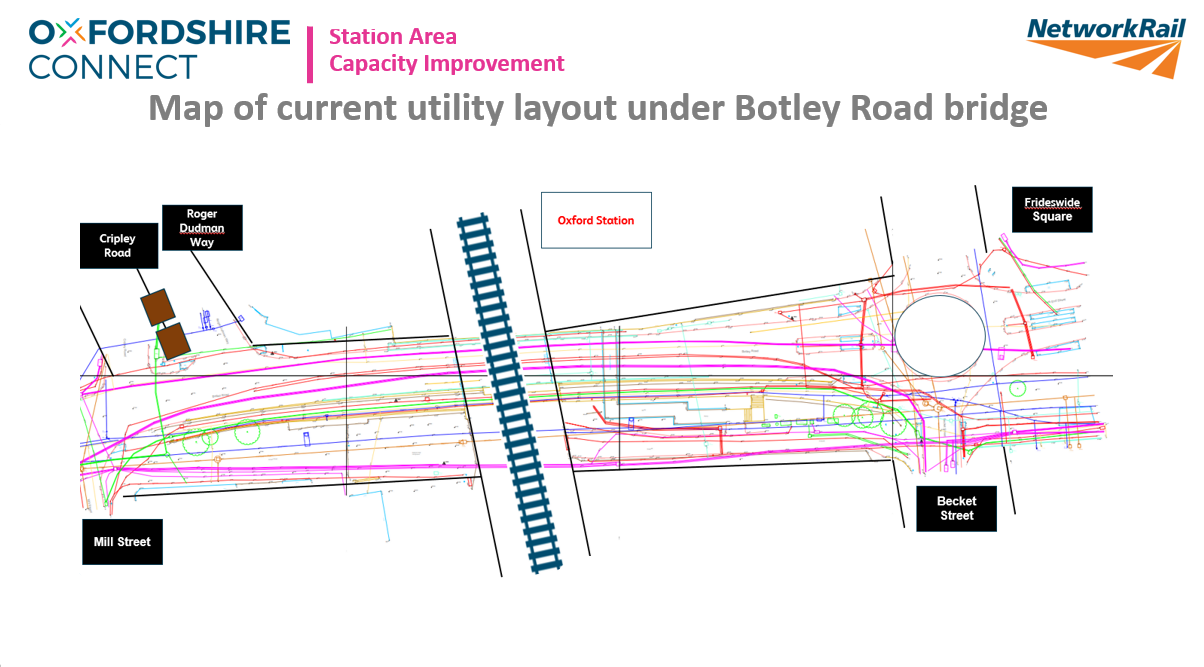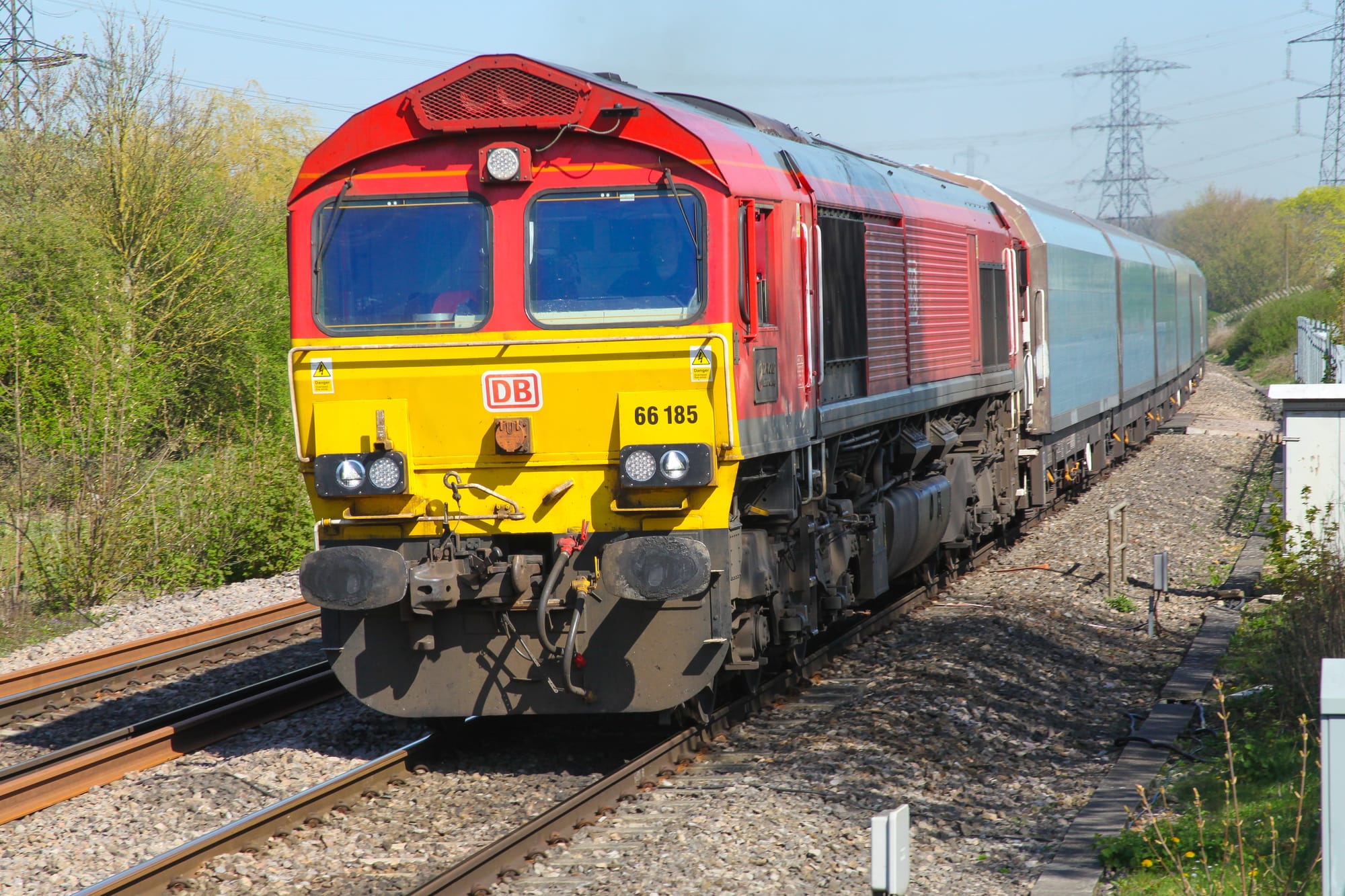Botley Road could remain closed until June 2026

Rail industry documents passed to the Oxford Clarion show that the Government will need to overrule Network Rail if the Botley Road work is to finish before June 2026.
The road was originally closed in April 2023, and was set to reopen in October 2024. But the discovery of a large brick drainage structure under the roadbed, and “highly complex” utilities pipes and cables, led to reopening being postponed. No date has yet been announced.
A seven-day ‘possession’ (closure of the rail line) will be required to install the new, wider bridge deck. The fragmented nature of the railway industry means that Network Rail, which maintains the track, has to give GWR, CrossCountry and freight operators advance notice of any closures.
Network Rail has already agreed the full list of railway closures up until May 2026, and a week-long closure at Botley Road is not included. That means the earliest that work could start is 17 May 2026. When snagging and follow-up works on the road are taken into account, the completion date is likely to slip into June.
After campaigning by local residents and lobbying by local MP Layla Moran, Anneliese Dodds in Oxford East, and city and county councils, the Government’s rail minister has agreed to visit Oxford and set out a way forward – but could he overrule Network Rail’s timetables?
Rail minister to visit Oxford
Lord Peter Hendy, the rail minister, is set to visit Oxford to give an update on the closure. He will be accompanied by Andrew Haines, chief executive of Network Rail. Hendy was formerly chair of Network Rail and Haines CEO of First Great Western, so both are familiar with Oxford’s railway. No date has been officially confirmed for the visit but 25 January has been touted locally as likely.
Options that Hendy could set out include:
- Continued closure until June 2026 or later that summer, with a confirmed date for reopening.
- A commitment to accelerate the road reopening before this date (once the utility pipes/cables have been relaid), followed by a second closure in summer 2026 to install the new deck and associated works.
- Overruling Network Rail’s timetable process to bring forward an earlier date.
- Abandoning parts of the project and reopening at the earliest opportunity.
Abandonment is viewed as unlikely. The wider (five-track) railway bridge is crucial for both passenger and freight services in the next few years. East West Rail, a £7bn project in all, could never develop beyond its initial service level. Reopening the Cowley Branch Line would become impractical, and direct services to Bristol unlikely. Oxford’s rail services would be frozen c. 2019 with no chance of improvement.
“Reopen asap, close again briefly” superficially sounds an appealing option. But it's not clear that it's feasible in engineering terms, nor that it would actually save on the total number of weeks closed. It would significantly increase the total cost of the project. It may simply be short-term gain to prolong the pain.
What’s happening?

A quick recap. The new, wider bridge is principally intended to accommodate one extra track, which will link into a new Platform 5 at Oxford station. This will provide space for trains terminating from London. It’s a future-proofed design which, in the future, could provide one more through platform by installing an additional span. As a bonus, the new bridge will provide much better passage for pedestrians and cyclists, and more headroom for buses – so that the city fleets of low-height double-deckers won’t be the only ones able to pass the site.
It’s 20 months since the road closed, and none of this is visible on the ground. The road has been excavated and the footbridge removed. The new bridge was meant to be in place by last October.

What went wrong? The answer, fittingly, is the title of a horror movie: What Lies Beneath.
Botley Road is not just an artery for traffic, but for utilities: water, gas, electricity, communications, all buried underneath the tarmac. These have proved harder to manage. The first setback was an uncharted inverted brick arch, which was feared to be providing structural support for the bridge. Other challenges have included, hilariously, “unidentified cables, 11 on each side of the rail bridge, not claimed by any of the utility companies”.
But a new end-of-level boss then appeared: Thames Water.
A water main runs along Botley Road, serving 60,000 residents. Initial designs for its replacement were repeatedly refused by Thames Water, with disagreements over where to locate the connection point (on the section of road between the railway and River Thames). Finally, work began on the connection in November 2024 – a month after the bridge should have reopened. This work is still ongoing. As we write, two connections are being made west of the bridge, while a new stop valve is being installed in Frideswide Square.
With the water main on the way to completion, work is finally starting on the new rail bridge itself. Network Rail’s contractors Kier are now drilling the foundations for the new bridge, with noisy piling work taking place through the day. Finally, visible progress is being made.
The Cowley connection

Oxford’s railway is a major railfreight artery. Shipping containers are transhipped at Southampton Docks and loaded onto freightliner trains for their journey to the Midlands and North. The 30-wagon trains that roar through the ‘middle road’ at the station could be carrying your latest online order.
Container freight can withstand a weeklong interruption. It will be diverted via London or another route. One major railfreight customer has more of a say, and that’s BMW’s Plant Oxford. Hundreds of Minis are sent out from Cowley to the ports every week.
The Mini trains don’t cross Botley Road. From Cowley, they go up to Hinksey sidings, where they reverse. But it may not be possible to replace the Botley Road bridge without shutting down the railway through southern Oxford, or commandeering Hinksey for supplies. That would throw another spanner in the works, as BMW would want any closure to coincide with their annual plant shutdown, which is usually two weeks in August. The plant shutdown can be rescheduled: in 2019, it was moved to March in anticipation of Brexit disruption. If Botley Road is to remain closed until summer 2026, this could shunt it a few weeks later.
Traffic filters and elections
The main impacts of the closure are on Botley Road locals and businesses; residents of western Oxfordshire who would have used Seacourt Park & Ride; and Abingdon Road dwellers who have seen the queues for the Westgate transplanted to their road instead. The travails endured by those in Osney, Botley and nearby have been painstakingly chronicled in a new booklet, ‘Network Hell’:
When local people talk about the closure, they often say that the hardest thing to bear — apart from Network Rail’s extraordinary incompetence — is that no one, not Network Rail, nor Kier (Network Rail’s contractor), the Department of Transport nor the city nor county councils, is listening to them, or accepting any responsibility, but instead just point the finger at each other. The purpose of this [booklet] is to give those who have suffered from this disastrous project a voice, and to allow them to say what this horrible intrusion into their lives has meant for them.
Oxfordshire’s politicians have been thrown for a loop, too. Oxford’s long-mooted traffic filters are waiting to be switched on. Oxfordshire County Council took the decision that this couldn’t happen until Botley Road had reopened – surely right for Hythe Bridge Street and Thames Street, though more of a judgement call for St Cross/Longwall. County council elections are scheduled for May this year. What's going on the leaflets?
Labour, worried about the threat from the pro-motoring Independent Oxford Alliance in its East Oxford heartland, has been frantically rowing back on the traffic filters it once voted for. The IOA is making hay. The LibDems and Greens are staying the course, with the Greens also taking seats from Labour in Oxford. But even they could have reason to be anxious. If council reorganisation pushes the elections back to May 2026, that could be just one month before Botley Road reopens and the traffic filters kick in – making for a febrile campaign environment.
There are no easy answers. Cancelling the works would hobble Oxford’s rail links for decades. Postponing or rescoping the project could result in brief relief but more pain down the line.
Yet residents are surely entitled to expect basic competence from Network Rail and Thames Water. After a December meeting, Oxford West & Abingdon MP Layla Moran showed the first line of Network Rail’s presentation. It read simply: “Sorry.” This has indeed been a sorry saga. Peter Hendy’s job is to convince Oxford that the end is in sight.
